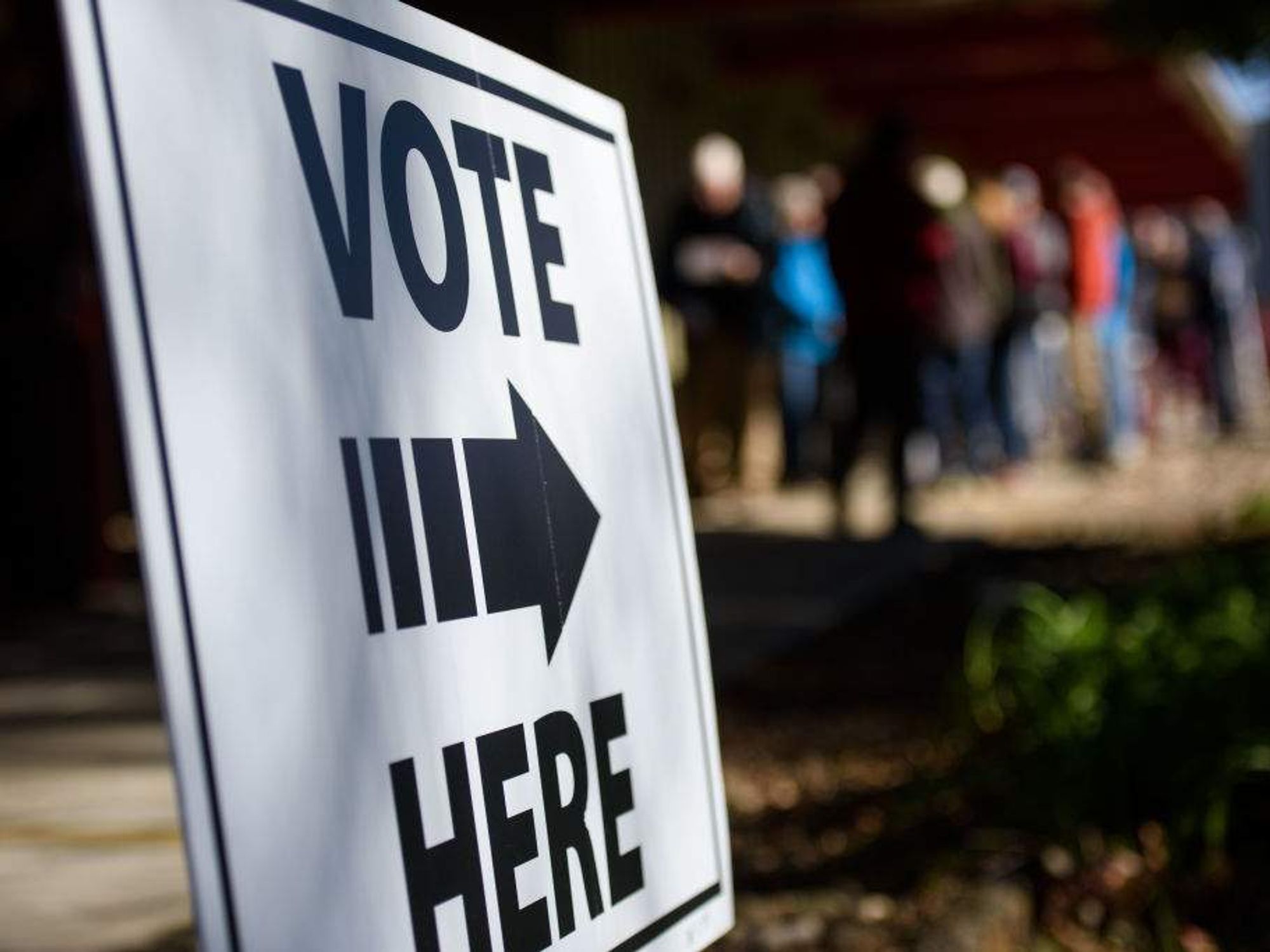Voting News
Here’s how to vote in the big Texas 2024 election in November

Voting begins
This article by María Méndez and Yuriko Schumacher originally appeared in The Texas Tribune.
The November 5 election is quickly approaching, and Texans will have the opportunity to vote for several federal, state and local officials, including president. The Texas Tribune, a nonprofit and nonpartisan news organization, is dedicated to helping Texans vote. Here's a comprehensive voter guide for November 5, 2024.
Election Day is November 5. Polls are open from 7 am-7 pm on Election Day.
What’s on the ballot? In addition to the president, eligible Texans have the opportunity to cast their ballots for many Texas officials running for office at the federal, state, and local levels.
This includes representatives in the U.S. and Texas houses and the following elected offices:
- 1 U.S Senator (currently held by Ted Cruz, facing off against challenger Colin Allred)
- 1 of 3 Railroad Commissioners
- 15 State Senators
- 7 State Board of Education members
- 3 members of the Texas Supreme Court
- 3 members of the Texas Court of Criminal Appeals
- 5 Chief Justices and various justices for Texas Courts of Appeals
Lower-level judges and local county offices will also appear on the ballot such as district judges, including on criminal and family courts, County Courts at Law, Justices of the Peace, District Attorneys, County Attorneys, Sheriffs, Constables, and Tax Assessor-Collectors.
You can use our
ballot lookup tool to see what state and federal elections you can vote in based on your address. Votes can’t be cast in uncontested statewide races, which will be listed separately on the ballot after races with multiple candidates. You can also view how your districts may have changed in 2021 due to redistricting here. (Don’t worry: We don’t store your information.)
Given that local elections, such as for county, city or school board seats, don’t typically feature major fundraising and TV or radio ads, it can be harder to know who is running for office and why. The best place to see what local candidates you can vote for is through your sample ballot, which can usually be found through your county’s election website. Find yours here
If you want to learn more about candidates, you can try visiting vote411.org to see if any of your candidates responded to the League of Women Voters' candidate questionnaires. This includes information about candidates for the statewide elections for president, U.S. senator, railroad commissioner and for members of the Texas Supreme Court and the Texas Court of Criminal Appeals. For state elected officials, you can use our directory to learn about and contact the offices of state officials.
How does the presidential election work? While Texans will see the presidential election on their ballot, the president is actually elected by electors, or party-selected representatives, from each state. This process is called the Electoral College. To win the presidency, a candidate must get at least 270 votes from the 538 electors in the Electoral College. Each state gets as many electors as it has U.S. senators and representatives in Congress. In most states, including Texas, whoever wins the most votes from voters gets all the Electoral College votes for that state. Texas has 40 electoral votes. Texas is not deemed a competitive state and hasn’t backed a Democratic candidate in a presidential election since Jimmy Carter in 1976.
How do I check if I’m registered to vote? You can check to see if you’re registered and verify your information through the Texas Secretary of State’s website. You’ll need one of the following three combinations to log in:
- Your Texas driver’s license number and date of birth.
- Your first and last names, date of birth and county you reside in.
- Your date of birth and Voter Unique Identifier, which appears on your voter registration certificate.
Oct. 25 is the last day to apply to vote by mail. This option is limited in Texas. Read more about who qualifies here.
Applications must be received by the early voting clerk in your county — not postmarked — by October 25. Applications can also be submitted by fax or email, but the county must receive a hard copy within four business days. They can also be dropped off in person. You can download an application here or request an application to be mailed to you here.
If you’re looking to vote by mail, give yourself as much leeway as possible. You’ll need to budget for the time it will take your county to get your ballot to you in the mail after you apply.
The deadline for mail-in ballots to be returned to the county is Election Day on November 5. If a ballot is postmarked by 7 pm locally that day, it’ll be counted if the county receives it by 5 pm on Nov. 6.
Absentee ballots can also be delivered to the county elections office in person with a valid ID while polls are open on Election Day. Completed ballots from military or overseas voters are accepted if they’re received by Nov. 12. (Military and overseas voters go through a different ballot request and return process.)
Read more about vote-by-mail requirements in this section.
Early voting in person runs from October 21 to November 1. If you can’t vote inside of a polling place because of an illness or a disability, curbside voting may be available to you. Read more about what qualifies as a disability and about voting options here.
Who is eligible to vote early? Anyone registered to vote may vote early, but it must be done in person unless you qualify to vote by mail.
Where am I allowed to vote early? Voters can cast ballots at any polling location in the county where they are registered to vote. Check your county elections office’s website for early voting locations.
Are polling locations the same on Election Day as they are during early voting? Not always. Check for open polling locations in your area before you head to cast your ballot. In some counties, Election Day voting may be restricted to locations in your designated precinct. Other counties allow voters to cast their ballots at any polling place.
What do I do if I run into issues with my voter registration? If you have questions or concerns about your registration, you can find your county’s voter registration contact here. Inside polling locations, there are typically “resolution desks” where poll workers can address registration issues.
You can also find more information on frequently asked questions from the secretary of state’s office at votetexas.gov.
How do I know if I’m eligible to vote by mail? This option is fairly limited in Texas. You’re allowed to vote by mail if:
- You will be 65 or older by Election Day.
- You will not be in your county for the entire voting period, including early voting.
- You cite a sickness or disability that prevents you from voting in person without needing personal assistance or without the likelihood of injuring your health.
- You’re expected to give birth within three weeks before or after Election Day.
- You are confined in jail but otherwise eligible (i.e., not convicted of a felony).
How can I find which polling places are near me? By October 15, county election offices are supposed to post on their websites information about polling locations for Election Day and during the early-voting period. The secretary of state’s website will also have information on polling locations closer to the start of voting. However, polling locations may change, so be sure to check your county’s election website before going to vote.
What form of ID do I need to bring? You’ll need one of seven types of valid photo ID to vote in Texas:
- A state driver’s license (issued by the Texas Department of Public Safety)
- A Texas election identification certificate (issued by DPS)
- A Texas personal identification card (issued by DPS)
- A Texas license to carry a handgun (issued by DPS)
- A U.S. military ID card with a personal photo
- A U.S. citizenship certificate with a personal photo
- A U.S. passport
What if I don’t have a valid photo ID? Voters can still cast votes if they sign a form swearing that they have a “reasonable impediment” from obtaining a proper photo ID. However, those voters will also have to present one of the following types of supporting identification documents:
- A valid voter registration certificate
- A certified birth certificate
- A document confirming birth admissible in a court of law that establishes your identity (which may include a foreign birth document)
- A copy of or an original current utility bill, bank statement, government check, paycheck or other document that shows the voter’s name and address (Any government document that contains a voter’s photo must be an original.)
If you have a valid photo ID but forgot it, you can cast a provisional ballot. You will have to visit the local voter registrar’s office within six days of the election to present an acceptable ID or documentation in order for the ballot to be counted. A registered voter without a valid photo ID or any of the supporting documents can also cast a provisional ballot.
Are there rules at the polls? Cellphones, cameras, computers and other devices that can record sound or images cannot be used within 100 feet of voting stations (where ballots are marked). There are usually traffic cones or signs indicating this. Campaigning, including wearing clothing or other items that publicize candidates, political parties or measures on the ballot, is also banned beyond this point.
Voters are allowed to use written notes to cast their ballot at the discretion of election officers, who may determine if the material counts as campaigning. Firearms, including handguns, are also prohibited at polling places, according to Texas law.

 David and Melissa Loder's Elf Town is on Penbrook Court in the Deerfield subdivision of Plano. Photo courtesy of David and Melissa Loder
David and Melissa Loder's Elf Town is on Penbrook Court in the Deerfield subdivision of Plano. Photo courtesy of David and Melissa Loder